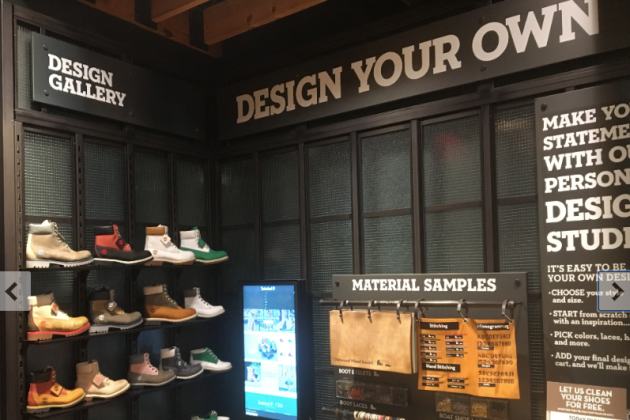Rethinking Tech Needs as Shoppers Return to Physical Stores

While change in the retail industry might be “inevitable,” to use Marvel bad guy Thanos’ favorite word, the COVID-19 pandemic had a profound impact on the rate of that change, which is affecting how retailers deploy in-store technology.
Rewinding the clock to the initial months of the lockdowns and mandates, consumers, bored and stuck at home, heavily shopped online. And while it mostly included purchasing necessities, over time people turned the act of shopping into a lockdown hobby. As a result, online sales skyrocketed. And retailers scrambled to make investments in digitalization.
More from WWD
Then something interesting happened.
Slowly, over months, as mandates lifted and people strived for normalcy, store traffic picked up while online sales also remained high. Consumers were used to buying online but craved being in a physical store, interacting and connecting with their favorite brands.
Now, while online sales growth is not on the same steep trajectory it was on in the early part of the pandemic, the pace of growth is still above pre-pandemic levels. And shoppers have returned to physical stores in full force.
According to data from the International Council of Shopping Centers, 74 percent of holiday consumers visited a shopping center during the 2022 holiday season. This compares to 70 percent in 2021. “This year, 39 percent of total spending was in physical stores, a notable uptick from 34 percent in 2021 and 33 percent in 2020,” the ICSC added.
The trend was also revealed in a recent report by Placer.ai that looked at the impact of physical store expansion by digital-native brands and direct-to-consumer brands over the past two years. Researchers at the company found that store sales drove online sales and vice versa.
Nikki Baird, vice president of strategy at Aptos and a retail industry influencer and former analyst, describes this shift in consumer behavior as having a profound impact on how retailers and brands assess, deploy and integrate their in-store technology.
Baird went deep on this topic during last month’s NRF Big Show. She took the stage with Calvin Anderson, vice president of global digital at Dickies, Smartwool and Altra, owned by VF Corp., and Dylan Bruntil, global director of retail technology at New Balance. The session, titled “Getting Real About Cloud POS and the Future of the Store,” was produced by Aptos and addressed how cloud POS, such as the company’s Aptos ONE POS solution, can help brands and retailers become future-ready.
[Read an exclusive Q&A with Nikki Baird here on “Keeping Pace with Retail’s Rapid Evolution“]
The session opened with a look at the role of physical stores in this post-pandemic period. “I think that the store is certainly still important,” Anderson said. “The pandemic taught us all to buy online if you didn’t already buy online. The store has to move from an inventory center to an environment where it’s an elevated experience of touching and feeling the brand. The consumer is going to the store with intention.”
Bruntil agreed with Anderson and noted that in a physical store, consumers are going to get a more personalized experience. “You’re going to get really immersed in the brand, and that’s really a differentiator between stores and other channels,” Bruntil explained. “One of the things that we saw throughout 2022 is our store traffic had double-digit increases. It just goes to show that the store is very much alive. Customers are coming into the store, and it’s truly an important aspect of retail.”
In order to offer consumers the best possible shopping experience, New Balance and VF Corp.’s Dickies, The North Face and Timberland brands are turning to Aptos ONE POS to make transactions smoother, friction-free and fully integrated.
Since the solution is native to the cloud, retailers and brands don’t have to worry about costly upgrade processes to stay current. And since it is mobile-first, Aptos ONE frees up associates to engage customers when and where they want to be served, including on the shop floor. Even endless aisle orders can be done right at the customer’s side. It’s a “one cart, one customer, one order” model, the company noted.
Baird said another key part of the value proposition of the solution is that it offers offline resiliency, meaning that the store can continue to trade in any environment, including when disconnected from the cloud.
With Aptos ONE and the assurance of being able to transact anytime and anywhere, retailers can avoid the dreaded “did the transaction go through?” dilemma that can be all too common with other cloud POS applications.
“Let’s say a customer taps to pay right as the device is switching from one access point to another, and the connection drops; then as the consumer, you’re, like, wondering if the transaction went through,” Baird said.
“And as a store associate, you’re like, ‘I don’t know,’” she said. “And that kind of interaction where you have that unreliability on a day-to-day basis really erodes the employees’ confidence in using that device because they don’t want to have to troubleshoot it. They don’t want to have to tell the customer, ‘I don’t know if you got double charged or not. Sorry, you’ll have to call if you get double charged.’”
With Aptos ONE, however, store associates have the confidence of knowing that transactions will not fail.
Baird acknowledged that cloud POS is still in the early stages. But retailers and brands are quickly adopting it as changes in how, where and even why consumers shop force companies to respond.
“Shoppers move fast, and retailers need to catch up,” Baird said. “Cloud POS offers brands and retailers a path to success and a way for them to simplify their technology footprint.”
Best of WWD

